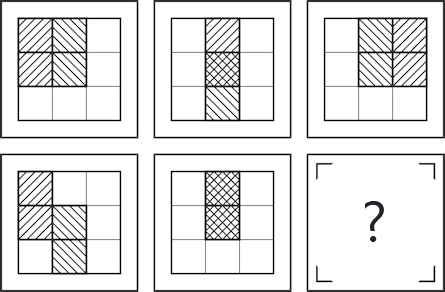Do you know you can study Master’s in the United States with an H4 or L2 visa?
Yes, you can apply for a Master’s degree either part-time or full-time.
Your initial plan for travelling to the U.S. as a dependent may not have been to further your study. However, if you are bored of staying home all day doing nothing, you can use the opportunity as you are already abroad. Moreover, being in the U.S. gives you a better chance of being admitted into the school than international students applying from their home country.
In this article, we will show you how you can study for your Master’s in the United States on an H4 and L2 dependent visa. We will also outline the advantages and disadvantages of studying on an H4 or L2 visa to help you make the best decisions during your stay in the United States.
Don’t go anywhere.
Scroll down and keep reading.
What is H4 visa and L2 visa?
H4 visas and L2 visas fall under the category of dependent visas. When someone with an H1B or L1 visa invites you to visit or live with them abroad, you will be issued an H4 or L2 permit. That means you are travelling to the United States as their dependent.
A dependent can be any immediate family member, like a spouse or unmarried children below 21 years. So, if your partner or parents live abroad (as long as you are unmarried and below 21 years), you can apply for the H4 or L2 visa.
Many people are unaware of this, but you can work and study in the USA with a dependent visa (H4 or L2). On the other hand, the H1B visa and L1 visa are non-immigrant visas for temporary workers in the United States. The L1 visa is particularly for employees in managerial positions transferred by their company to work abroad.
READ: Can I Get a Master’s Degree in an American University With HND?
Prerequisites for Studying Masters on H4 or L2 Dependent Visa
So, how do you study Master’s in the United States on an H4 and L2 dependent visa?
First off, you must ensure you have the requirements to study abroad. The first criterion for studying in the United States is proof of your English language proficiency. Universities abroad are keen on ensuring that their international students can communicate fluently in English.
That is the language the school will deliver your entire Master’s program, including lectures, assignments, and projects. So, you must speak, write, hear, and understand the English language fluently.
However, they won’t take your word for it. It has to be proven on paper. That’s why you need to take the IELTS or TOEFL exam to demonstrate your mastery of the English language. If you are enrolling in a competitive program like a STEM (Science, Technology, Engineering, and Maths) course at a prominent university, it’s best to take the GRE or GMAT exam.
READ: IELTS Exam vs. TOEFL: Which Should You Take?
After obtaining your proof of English, you will be required to submit the following documents during the application process.
- Transcripts
- TOEFL or IELTS or PTE Score
- GRE or GMAT Score (Optional for STEM courses)
- Statement of Purpose
- Financial Affidavit
- Recommendation Letters
- International Application Fee
- Means of Identification
READ: All You Need to Know About GMAT
Submitting Your Application
When applying for your Master’s program, create a list of universities that match your interests and career path. You can search for schools that don’t require IELTS, TOEFL, GRE, or GMAT scores. Please do thorough research and ensure you meet their eligibility requirements.
Also, please inquire about the welfare resources and facilities available for their international student community.
Do they give scholarships or financial aid to international students?
Are there on-campus job vacancies for international students?
Do they have support groups for international students?
What are the career prospects for international students who attend the school?
When you are ready to apply, ensure you submit applications to multiple universities. Don’t throw all your eggs in one basket. Even if you have your eyes set on a particular school, it’s best to diversify your options. The United States is home to some of the world’s leading universities renowned for their exceptional prowess in Science, technology, research, and innovation. So, feel free to explore your educational options.
When you submit your application, the school will send out the I-20 form in three to four (3-4) weeks if you are accepted. Once you secure the admission and the I-20 form, you can begin your Master’s study on an H4 or L2 dependent visa.
Should I Study on H4 or L2 Dependent Visa?
This must be the question on your mind. You’re probably wondering if it’s the right move or if there are better alternatives. The only way you can determine that is to compare the benefits and disadvantages of studying for your Master’s on an H4 or L2 Dependent Visa.
Advantages of Studying Masters on H4 or L2 Dependent Visa
Now, let’s talk about the perks of studying for your Master’s on an H4 or L2 dependent visa. They include but are not limited to the following:
1. This could be your ticket to financial independence. As an H4 or L2 visa holder, you depend on your spouse and are not legally allowed to get a paid job. However, when you enrol for your Master’s degree, you are on the path to financial freedom.
2. With the H4 or L2 dependent visa, you can study full-time or part-time.
3. You don’t necessarily have to work while studying. If you’re not all for the work-study life, you don’t have to stress about paying bills. Remember, you already have a working relative there who is considered your sponsor.
Moreover, studying with this dependent visa is only ideal for someone who wants to get their Master’s degree without the immediate necessity to find employment or those who can secure employment eligibility by other means such as H4 EAD or L2 EAD.
4. Once you complete your Master’s program, you are eligible to apply for an H1B visa in the Master’s quota.
5. You may be lucky to get the in-state tuition fee and save 50 to 60% on university tuition fees. We will discuss this in detail.
READ: Studying in the USA on a Limited Budget
Disadvantages of Studying Masters on an H4 or L2 Dependent Visa
Haven highlighted the advantages; we know you can’t wait to get that degree. However, it would help if you also weighed the cons before making a final decision. Some of the disadvantages of studying Master’s on an H4 or L2 dependent visa in the US include:
1. When you enrol for the course, you cannot do optional or curricular practical training.
2. You can’t apply for an in-state tuition fee unless you’ve lived in the United States for at least one year.
3. You can’t utilize other university funding options.
4. You won’t be eligible for CPT, OPT, and STEM extension.
As you can see, studying on an H4 or L2 dependent visa is not all rosy. However, the pros outweigh the cons, depending on what you want. If you are not satisfied with your limited job opportunities as an H4 visa holder, we recommend you go for it. Remember, this may be your only opportunity to get a Master’s degree in the United States. You must make the best of it.
Converting Your H4 or L2 Dependent Visa to F1 Visa
The best part of applying to study Master’s on an H4 or L2 dependent visa is that you can change your visa status. Once you get admitted into the university and secure the I-20, you can apply for a change of visa status. We recommend converting your visa to an F1 visa if you want to work during and after completing your Master’s program.
When you convert to an F1 visa, you become eligible to work on-campus jobs while studying at the university. You have access to CPT during the program and OPT, STEM OPT extension after completing your Master’s. You will also be eligible for an H1B visa under the Master’s category.
But there is a downside to it. You know everything that has an advantage also has a disadvantage. If you switch to an F1 visa, you will no longer be eligible for an in-state tuition fee. That means you have to pay the high tuition fees applicable to international students.
READ: How to Show Proof of Funds for F1 Visa
How to Get In-State Tuition for Your Master’s on H4 or L2 Dependent Visa
We promised to discuss this in detail, and here we are.
As an H4 or L1 dependent visa holder, you may be eligible for an in-state tuition fee. The in-state tuition fee covers approximately 50-60% of the cost you would pay as an International student on an F1 visa. This means that you pay lower tuition fees than other international students. However, terms and conditions apply.
First, having an H4 or L2 dependent visa doesn’t automatically make you eligible for the in-state tuition fee. You can only apply for the in-state tuition fee if you have lived as a dependent in the U.S. for at least one year. Moreso, different universities and states in the U.S have various application schemes and policies for getting the in-state tuition fee. We recommend you check the specific rules that apply to your prospective school.
You must also understand that although in-state tuition is available to international students in all public universities, it doesn’t apply to private institutions. So, if you’re looking to study at a private university, you won’t have access to the in-state tuition fee.
READ: How Much Does a US Postgraduate Degree Cost?
Apart from varying university policies, there are other conditions you must meet to apply for in-state tuition. They include:
1. You must be married to an H1B visa holder.
2. You must be dependent on an H1B visa holder and live with them in the same state for at least a year.
3. Showing proof of residency is also required.
4. Ensure that your benefactor (or spouse) pays state taxes.
If you fail to adhere to these rules, you won’t be eligible for an in-state tuition fee.
How to Prepare for In-State Tuition on an H4 or L2 Dependent Visa
If you are an H4 or L2 dependent visa holder and have met the requirements listed before, there are some things you need to do in preparation for the in-state tuition fee.
These rules also apply when moving from one state in the U.S. So, this will come in handy when you want to relocate to another state in the United States.
1. Get a state driving license in the first week of your arrival in the United States.
2. If you have a car, ensure it’s registered and obtain an official registration number plate.
3. When renting a house or apartment with your H1B visa benefactor or spouse, ensure the rental agreement is written in their name.
4. Open a new bank account in the state you are living.
5. Ensure to file your tax return at the end of the year.
In Conclusion,
Studying Master’s on an H4 or L2 dependent visa may seem like a rigorous process, but it will be worth it when you finally get that degree. With that Master’s degree, you will open yourself up to a world of possibilities in the United States. You will become eligible to get an H-1B visa which legally allows you to get a paid job in the U.S. With that, you can earn your own money and pay your bills.
READ: How to Get an H-1B Visa
We wish you much luck pursuing your educational and professional goals in your new home! We hope this article answered some of your questions regarding how to Study Master’s on an H4 or L2 dependent visa. If you have more questions, you can schedule a call with our career advisors for further guidance.


